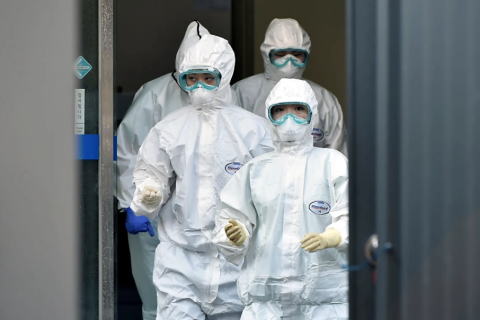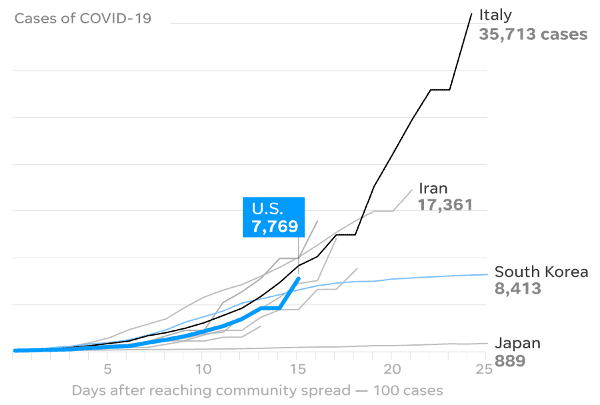箕面.の英会話教:英会話.KEA.-箕面. 小野原、彩都. 茨木
箕面、小野原、彩都、茨木.の.英会話スクール.です
・個人レッスンが中心です ・講師は日本人!
・英検、TOEIC、ビジネス英語の特別授業も好評です。
ギャラリー
USA TODAY analysis 1

USA TODAY analysis: America's coronavirus 'curve' may be at its most dangerous
point
The U.S. will soon find out whether it's likely to be the next South Korea
or Italy or even China when it comes to the new coronavirus crisis.
LONDON – Soon, the United States will find out whether it's likely to be
the next South Korea or Italy or even China when it comes to the acceleration
of coronavirus cases and deaths.
A data analysis by USA TODAY finds that, two weeks after the U.S. first entered into community transmission on March 3, America’s trajectory is trending toward Italy’s, where circumstances are dire. U.S. officials are sounding the alarm, urging Americans to heed what federal, state and local officials are asking of them in order to curtail the spread and dampen the impact of the virus on the U.S. population.
Although it's too early to draw definitive conclusions about which countries will ultimately weather the COVID-19 storm best, public health data shows that nations that are so far faring well at suppressing the outbreak's spread have done so through this combination: easy access to testing, rigorous contact tracing, clear and consistent science-based messaging, and a commitment to studiously abide by quarantines while clamping down on socializing no matter how tempting it may be to stray.

U.S. officials are monitoring what is playing out in other countries, particularly Italy, where rates of transmission and deaths in its northern regions have been so catastrophic that the Italian College of Anesthesia, Analgesia, Resuscitation and Intensive Care recently drew up guidelines for doctors about how to manage the crisis if the outbreak intensifies. Among the considerations discussed: prioritizing treatment for those under the age of 80 who don't have any "co-morbidities" – underlying health conditions. With too many patients to care for, many needing intensive care beds and ventilators that are in short supply, medical staff would need effectively to decide who lives and who dies. It's a form of triage medicine that is usually reserved for wartime.
"We're following every single country's curve," said Dr. Deborah Birx, the White House coronavirus task force response coordinator, during a briefing Wednesday.
For most people, the new coronavirus causes only mild or moderate symptoms, such as fever and cough. But for older adults, especially those with pre-existing health conditions, it can cause much more severe illness, including pneumonia.
The Centers for Disease Control and Prevention's worst-case-scenario is that about 160 million to 210 million Americans will be infected by December. Under this forecast, 21 million people would need hospitalization and 200,000 to 1.7 million could die by the end of the year.



